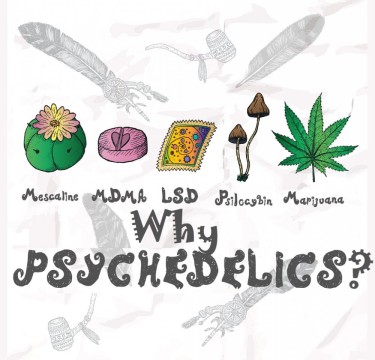
Trippin’ America? – Almost 30% of Americans have tried psychedelics at least once
When you talk about psychedelics, some people think that psychedelics are not popular. Some even go so far as to say they’re not cool and trendy. However, a recent poll by YouGov might convince you otherwise. The poll was designed to find out how many Americans have tried psychedelic substances at least once, and the answers may come as a surprise to many. Read on as we examine how 28 percent of Americans have tried psychedelic substances at least once.
The YouGov survey was conducted between July 22nd and 25th, in which 1000 adults were asked to answer questions on an online survey. These 1000 respondents served as the sample size for the larger population, and inquiries were made about psychedelics. The results of the survey showed that 28 percent of Americans have used at least one of the seven types of psychedelics surveyed. The order of psychedelics in terms of use is LSD (14%), psilocybin (13%), MDMA (9%), ketamine (6%), DMT (6%) and saliva (5%).
One important takeaway from this survey is that acceptance and popularity of psychedelics is gradually increasing among Americans. This increasing popularity is bound to have a consolidating effect on legislative and decriminalization efforts. YouGov agrees, stating that the shift in policy and public opinion on psychedelics shows that the tide may be changing. States in the US like California and Oakland have decriminalized psilocybin, known as psychedelic mushrooms. Other states are also following these moves, with Colorado voting on whether psilocybin will be available statewide by November. Oregon will also allow the use of psilocybin for mental health treatments through January 2023, subject to certain conditions.
A more detailed analysis of the demographics of the respondents gives a good picture of which socio-economic stratum the product is gaining popularity from. Men seem to dominate positive responses, with 34% of respondents identifying as men, while 22% identify as women. Based on the age of the respondents, young people are, as expected, strongly represented. 35% of the respondents are between 18 and 29 years old, 39% are between 30 and 44 years old and 14% are over 65 years old.
From the economic class, respondents were classified according to family income. Classes available are $50,000 or less, $50,000-$100,000, and $100,000 or more. According to this, 42% have a family income of $100,000 or more, 34% between $50,000 and $100,000 and 23% have a family income of $50,000 or less. This shows that psychedelics are somewhat popular among the upper class. But those who earn less are also well represented. A similar trend was also evident in relation to the level of education of those who have tried psychedelics at least once. 42% of positive respondents have a postgraduate degree, 26% have a bachelor’s degree, and 24% have a high school degree or lower.
Geographical location in the US is very important when it comes to public perception and opinion and the same has been shown here. Rural areas had a small proportion of respondents at 19%, while those living in suburbs and cities were represented at 26% and 36% respectively. In terms of region, responses followed the trend of regions with statutory psilocybin laws. The Western region of the United States was represented by 37% of respondents, 34% from the Northeast and 23% from unspecified regions of the South.
The final identifier used to classify respondents’ demographics is socio-political views. This was classified as either very conservative, conservative or liberal. The results show that 52% of respondents were liberal and all had tried at least one psychedelic drug. As expected, most respondents who identified as very conservative have rarely tried psychedelics. The same response trend was also given by respondents who identified as conservative.
The reactions to psychedelics turned out to be very positive for their popularity of psychedelics. However, it was quite stiff in terms of the acceptance of the products. Because the majority of those questioned still rejected the decriminalization of the natural product. LSD and MDMA met the most opposition, with 53% strongly opposed to their legalization. Psilocybin was also strongly opposed by respondents, with 44% opposing decriminalization. The reality of this finding is that those who have had experience with psychedelics tend to push for their decriminalization. Likewise, support for legalization among those who have not had any experience with psychedelics is very low.
The medical argument in favor of psychedelics persists among enthusiasts and pro-reformists. Many who have tried the psychedelic substance at least once are vocal about its use as a medical treatment. Research into the clinical evidence for psilocybin is still very slow and bipartisan support is needed to move forward. Most talked about right now is the use of psychedelics to help veterans cope with post-traumatic stress disorder (PTSD). Respondents to the survey were also asked for their opinion on this study, and 54% supported it while 18% opposed it. Sixty-three percent of respondents with a postgraduate degree supported the research, along with 49 percent of those without a college degree.
The reality is that there is still a long way to go before most psychedelics are decriminalized. Cannabis, too, followed the same path before gaining traction and being legalized in several states. Although the cases appear similar, they also differ in several respects. The push into psychedelics is on good ground due to popularity. Next is information that will be useful in educating and educating the public about the usefulness and benefits of the products. After that, we can begin to look to the good days for psychedelics.
WEED AND PSYCHEDELICS, READ MORE…

IF YOU ARE GOOD WITH WEED, WHY TRY MUSHROOMS?

Post a comment: